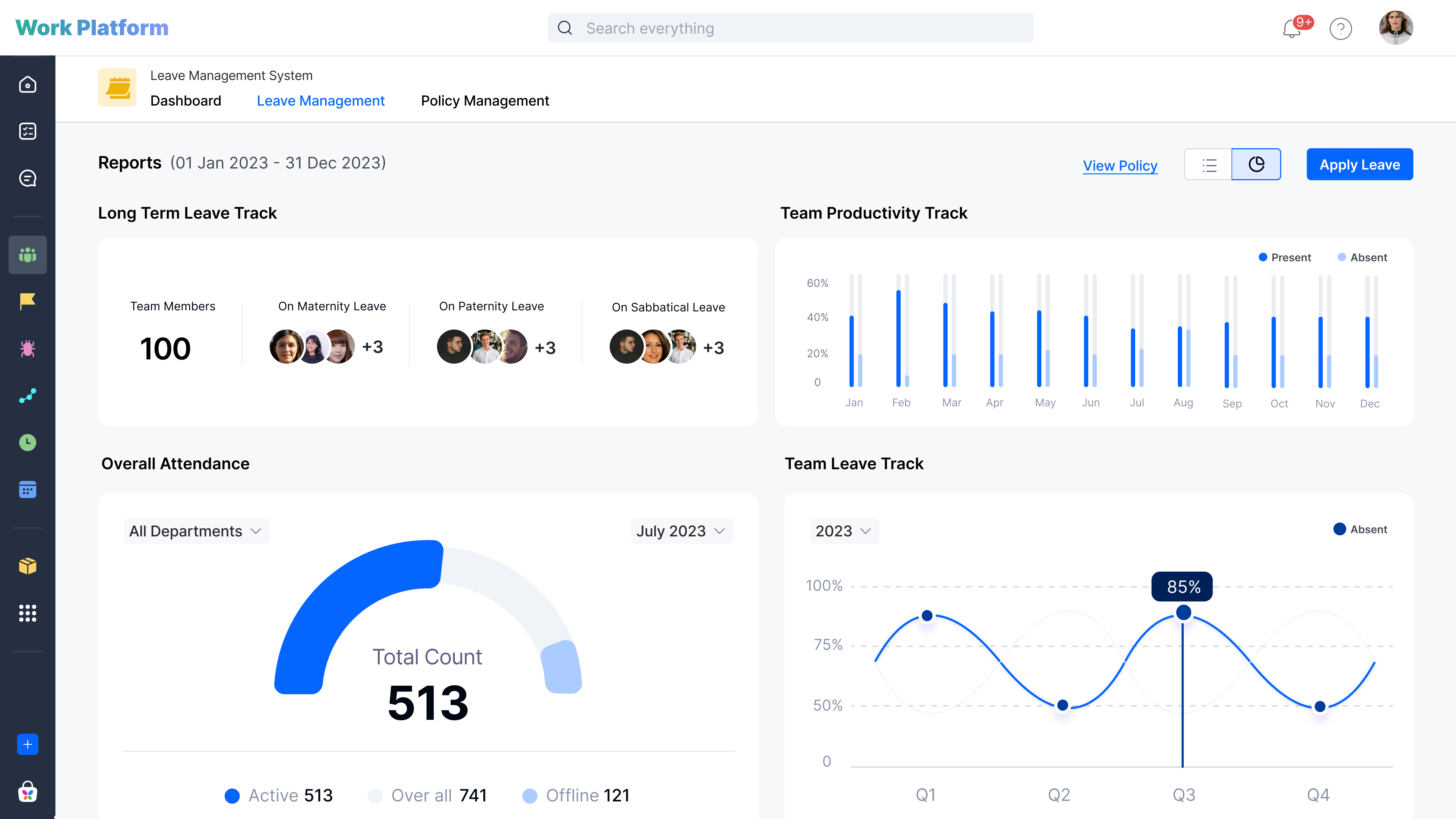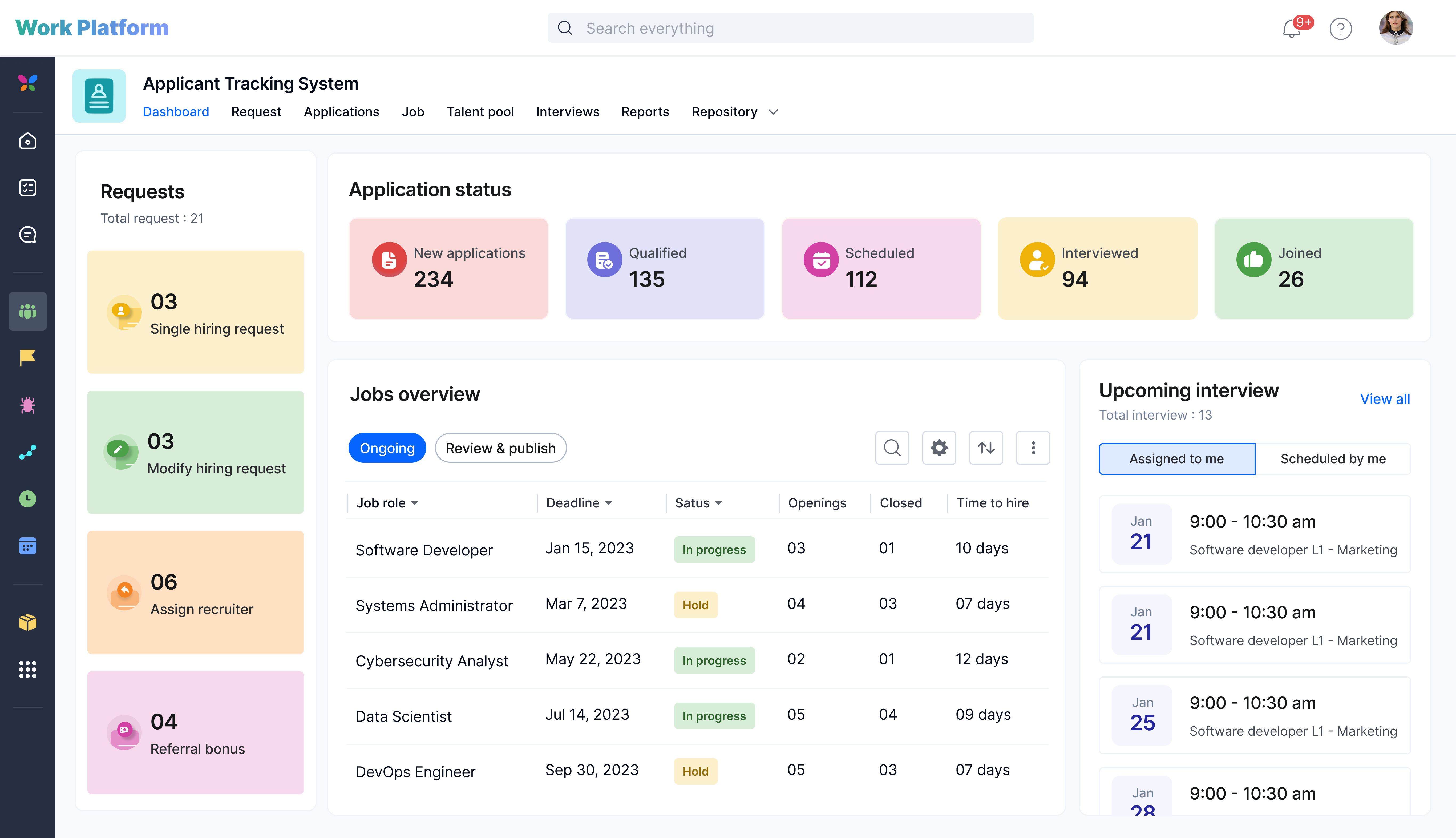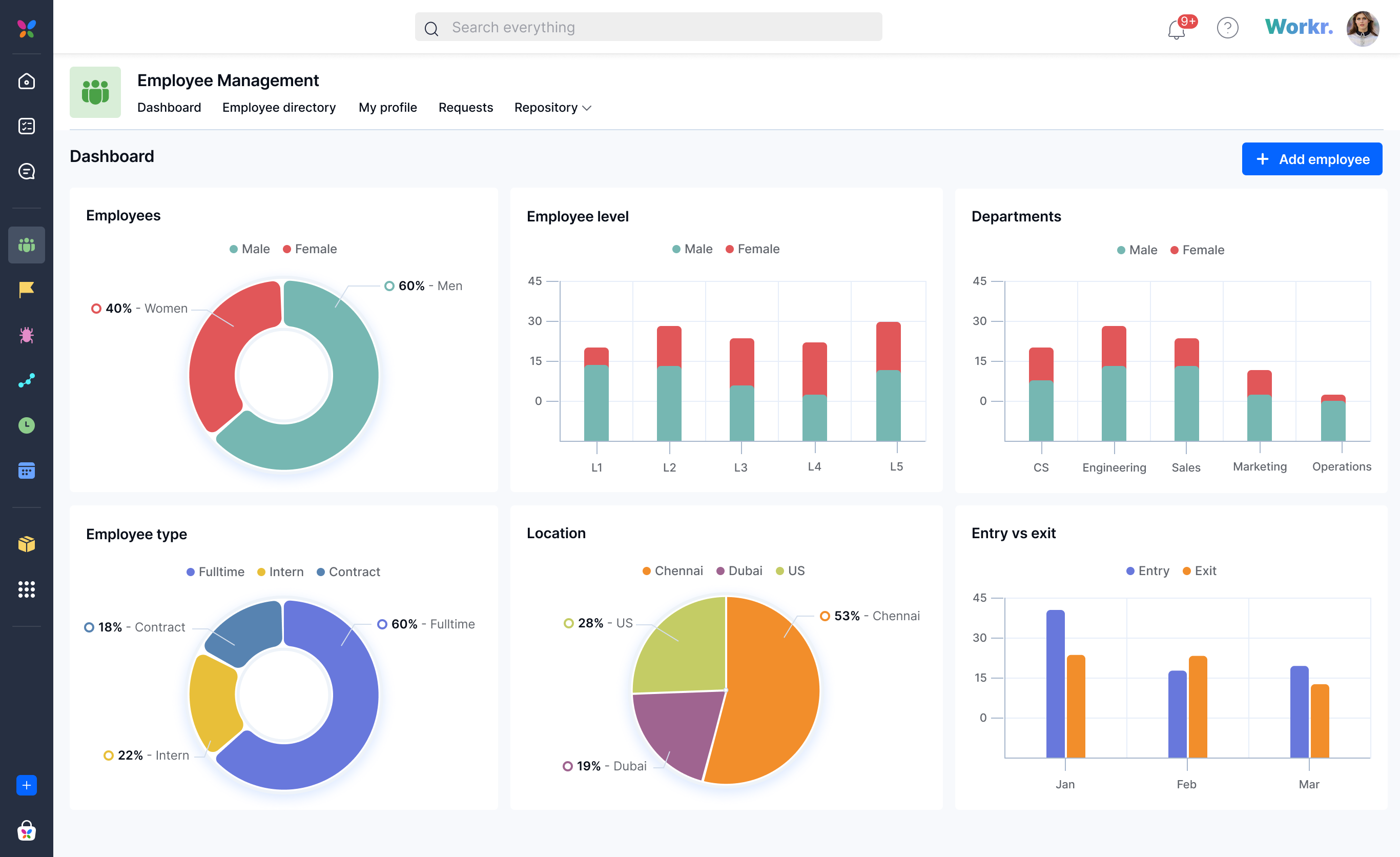Build Faster With
Kissflow's Pre-Built Low-Code Apps
Building low-code apps with Kissflow is easy and requires minimal training. The visual app-building approach empowers anyone to create simple and complex apps without needing developers. Install fully functional pre-built low-code apps to instantly automate and digitize your internal operations, streamlining your work without starting from scratch.

Leave Management
Managing employee time off just got easier. With our intuitive leave management system, you can handle leave requests, approvals, and tracking all in one place. Designed to be simple and efficient, this leave management app takes the hassle out of managing absences—making it the ideal leave tracking software for growing teams.
Creator
Language
English
Category
HR
Trusted by businesses managing employee leave and attendance worldwide



Efficient leave management is essential for organizations seeking to optimize employee productivity and well-being. Kissflow’s leave management app is an effective tool to streamline your leave management process, including tracking and managing employee leave requests, approvals, and balances.
This app includes a comprehensive leave calendar and reports that provides clear visibility into all leave requests, approvals, and balances. Leave policy is a key feature and heart of this application. This key feature defines leaves for the organizations based on demographics. Managers can easily approve or reject leave requests, and employees can seamlessly request leave and track their leave balances. Overall, the app aids in streamlining the organization's leave management process.
Modules
Leave policy
Define leave policies specific to your organization based on employee type, gender, location, shift, etc.
Leave application
Submit and manage leave requests with ease, including details like leave types, dates, and reasons.
Leave calendar
Visualize team and company-wide leave schedules to plan with an organized calendar view.
Leave repository
Access company leave policies, leave types, balances, holidays, and employee leave records in a centralized location.
Features
Leave application
Leave calendar
Leave repository
Team leave track
Yearly leave type status
Long-term leave track
Employee leave maintenance
Role-wise leave management
Leave policy management
Dashboards and report
1. Click the Enquire button on the app tile or landing page.
2. Fill in the details of the features you want and your team’s size on the enquiry form.
3. Click Submit.
Kissflow’s support team will contact you to learn more about your requirements.
Simplifying leave processes: Our customers' speak
Find out how HR teams automate leave requests and approvals with Kissflow

This is so easy, even my mom could do this. It was extremely intuitive and straightforward. The watermark was, 'I don't need to call IT to do this. I can do it myself.
Renee Villarreal
Senior IT Manager
Industry
Energy
HeadQuaters
USA
Key Highlights
450+
Process
10x
ROI
10,000+
Users


The beauty of Kissflow is how quick and easy it is to create the apps I need. It's so user-friendly that I made exactly what I needed in 30 minutes.
Oliver Umehara
IT Manager
Industry
Telecom & Media
HeadQuaters
Japan
Key Highlights
28+
Processes
42
Group Companies
70+
Users


We seek to go beyond incremental efforts not only in sustainability but also in everything we do. With Kissflow, FPH and its subsidiaries were able to digitize dramatically major operations, especially in their finance and accounts operations.
Joseph Arnel Chavez
Assistant Manager
Industry
Energy & Utilities
HeadQuaters
Philippines
Key Highlights
100+
Office Processes Automated
1,000+
Monthly Paperless Processes
10,000+
Employees
Frequently Asked Questions
Didn’t find what you were looking for?
Accelerate and scale app development with Kissflow
Customize with pre-built templates
Build custom low-code apps quickly with pre-built templates.
Tackle internal app backlogs
Implement strategies to clear your internal application backlog quickly.
Join enterprises that trust Kissflow
Enterprises use our low-code platform to streamline app development.
Didn’t find what you're looking for?
Let us know what we can build for you

.png)

.png)













